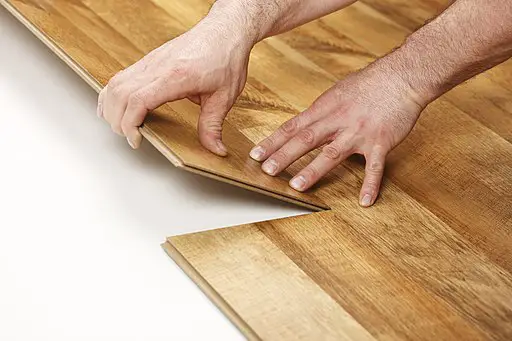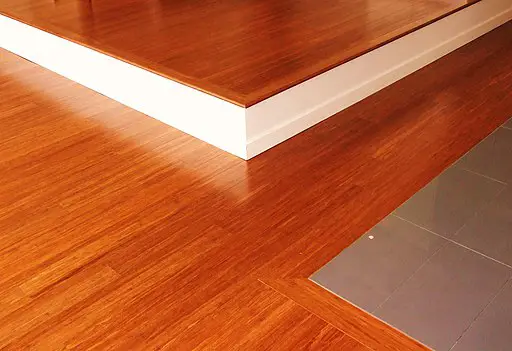Installing a new hardwood floor, or refinishing an old one both take a lot of hard work, time and money. Apart from the money and hard work that it takes, time is also a major concern for a lot of people as they have a very busy life. There are a lot of things that happen during the installation or refinishing of a floor. Coating the floor with a polyurethane coat to protect it from water, moisture, and other damages is a process that takes more time when installing or refinishing it.
When your floor has been coated with polyurethane, it takes some time to dry, and during that time, the floor is unusable, which creates a lot of discomforts. This process can take even more time if you do not know properly about the factors that impact the drying of polyurethane over the floor. To know exactly how much time your flooring project would take, you must calculate the precise time for the polyurethane to dry. Below is a list of a few factors that impact the overall drying process of polyurethane.
Factors that Impact drying of Polyurethane:
Here are some of the major factors that impact the drying process.
- Weather and Season: Changing seasons have a great impact on the overall drying process of polyurethane. Consider that you are applying polyurethane and it starts to rain, or the weather becomes wet. In this situation, the floor would require more time to dry polyurethane. While during the summer season and when the days are extremely hot, the lower humidity and higher temperatures would allow the polyurethane to quickly dry. So, it is important that before making a decision related to refinishing or installation, you must consider the seasonal and weather factors in your mind. If you want your floors to quickly dry, it is better that you should apply polyurethane on them during the summer season or during the hot weather instead of cold days.
- Type of Polyurethane: Different types of polyurethane mixtures are made using different materials. Two major types of polyurethanes that are most commonly used on the floors are water-based and oil-based polyurethane groups. As these two are made from two different materials, they also have different types of drying processes. This means both of these take different times to completely dry once applied over the surface of a floor. So, before buying polyurethane for your floor, make sure that you are choosing the right type of polyurethane. If you choose the wrong type of polyurethane, you may have to wait longer for your floor to dry. Mostly water-based polyurethane finishes are considered to dry quickly in comparison to oil-based polyurethane finishes.
- Type of Sheen: The type of sheen that you choose for your floor, also impacts the overall time for drying polyurethane on a floor. Sheen is a measure of the luster or shines that you want on your floor. There are multiple options available in this regard that you can choose. The first one is known as the Matte; it contains up to 25% luster. The second one is known as Satin; it contains up to 40% luster. The third one is called Semi-Gloss, as it has up to 55% luster. The fourth and last type of sheen for a hardwood floor is called Glossy, and it contains 70% luster. The amount of luster is responsible for the reflection of heat and temperature over the surface of the floor. If your floor is reflecting more light, it would absorb less light and heat, which would reduce the temperature significantly. This would further lead to the slow drying of polyurethane from your floor. So, before choosing any of the floor sheens, make sure that you consider its luster and its increased or decreased time to dry the floor.
- Types of Hardwood: Different types of hardwood species or types of hardwood can also impact the process of drying. Some hardwood species quickly dry while some take more time to dry out the polyurethane applied over their surface. This is because each hardwood type has its structure and individual features that contribute towards the quick or slow drying of polyurethane. Hardwood species or hardwood types that have darker shades, absorb lighter and mostly tend to quickly dry. Meanwhile, the lighter species reflect lighter and absorb less. This is why they take more time to dry as well. So, before deciding about a hardwood type or species, consider the drying time as well.
- Temperature & Moisture: Temperature and moisture are also two major factors that impact the overall process of drying polyurethane on a hardwood floor. As we all know that when temperatures are hot, things dry quickly. Also, when there is low humidity in the environment hardwood floors dry quickly. While in places with higher humidity and lower temperatures, the hardwood floor’s polyurethane coating would take more time. That is why you should consider this factor in your mind when you are installing a floor or refinishing an old one. It is better to install your floor during the summer as the temperature during the summer remains high while there is low moisture in the surroundings as well.
- Surface: The surface of the floor also impacts the process of drying polyurethane on a hardwood floor. If the surface of the floor is completely clean, sanded properly, and has no scratches or damages over its surface, the entire floor would dry quickly and would appear to be the same as well. Meanwhile, if it is broken, or scratched, or damaged, and dented, these parts of your floor may take more time. This happens because mostly in such places, you apply a deeper coating of polyurethane, the rest of the floor. So, even if the rest of your floor has dried the polyurethane, such damaged or dented parts will take more time to dry. Keep this factor in mind and make sure that your entire floor has been properly sanded and repaired before you apply the coating layer of polyurethane.
- General Cleaning: General cleaning also impacts how quickly your floor’s polyurethane coating will dry. If your floor is completely clean and has no debris, or dust particles, or anything dirty. Because if your floor is not completely clean, it will take more time to dry. So, before applying a polyurethane coating make sure that you have completely cleaned your entire floor.
- Applying Process: The process of applying polyurethane on the floor can also impact the overall drying rate of the polyurethane coating. If you have properly applied according to the instructions given, it should take more time. If you haven’t applied it properly, there is a chance that some parts of your floor may quickly dry while the other parts of your floor may take more time. To prevent this type of situation, you should consider hiring the help of an expert. But even if you want to do it yourself, learn from tutorials first and then follow the process thoroughly to avoid mistakes. If you do so, your hardwood floor should take a proper time to dry, not more or less.
These are a few factors that impact the rate at which polyurethane dries on the surface of the hardwood floor. To make sure that your floor dries quickly, it is important to keep these in mind and make a wise decision.
Below is a quick guide table on how polyurethane time to dry and cure:
| Type of Polyurethane | Time to Dry | Time to Cure |
| Water-based Polyurethane | 1 day to 7 days | Up to 30 days |
| Oil-based Polyurethane | 3 days to 14 days | Up to 40 days |
Drying Vs Curing of Polyurethane
Drying is not the only thing that happens after you have applied the polyurethane on the surface of your hardwood floor. You should wait for the floor to completely dry and cure before you should walk over its surface. Below is the difference between these drying and curing of polyurethane.
DRYING:
The surface of a hardwood floor would be considered dry if it does not appear to be wet. If it looks dry and feels like you can walk over its surface without damaging the coating, it means it has dried. Once your floor has dried, you can walk on its surface but it requires proper caution. You cannot normally use the floor. The polyurethane during the drying process attaches itself or binds it with the floor. But this bonding is not very strong and can easily be broken with some force. This can lead to damages on the floor surfaces and damage in the coating of the polyurethane layer. It can take from 24 hours to 72 or 96 hours as well.
Curing
This is a long process and takes more time. It can take up to a month to completely cure a floor. Curing is the bonding of floor and polyurethane. It is a state where floor and polyurethane coating can no longer be separated. The particles in the polyurethane react with the oxygen and other elements in the hardwood and create a very strong bonding that can last for decades and can only be removed with harsh and brute force. This process is painfully slow and can take up to a month for the floor to cure completely.
As you have already learned about water-based and oil-based polyurethane, it is time to learn how long it takes for these two different polyurethanes to dry completely and cure.
Length of Time required for Water-Based Polyurethane to Dry
Water-based polyurethane does not have oil content in them, they are environmentally friendly. As they lack oil in their mixture, they dry quickly. You can walk on the surface of the floor with care after 6 to 12 hours of applying polyurethane. During winter it may take a few more hours to be able to be walked on. After 12 to 36 hours, you can carefully walk on the surface of the floor with your socks on. You cannot move on the floor with shoes yet. But after 48 hours, you can walk on the entire floor with your shoes with care. After 48 hours, you can also move your furniture as well. If you have pets, make sure to keep them away from the floor for the next 4 to 6 days.
Length of Time required for Water-Based Polyurethane to Cure
Curing in some cases can take a lot more time but during the hot summer days, it takes up to 30 days to completely dry and cure. While in winter and humid environments, this process may take a few more days as well. Until your floor completely cures, make sure that you do not cause any damage to the coating of polyurethane. Because if you cause damage to the polyurethane layer, you will have to apply it once again. Which can further increase the time of drying and curing. To avoid this, be careful for the first 30 days after applying the polyurethane on a hardwood floor.
Length of Time required for Oil-Based Polyurethane to Dry
Oil-based polyurethane consists of oily compounds. Oily compounds tend to dry slowly in comparison to water. This is because water quickly turns into vapors as the temperature rises, the rest of the polyurethane then binds with the molecules of hardwood. Meanwhile, the oil takes even more heat and higher temperatures to dry.
You cannot walk on the surface of your hardwood floor after applying an oil-based polyurethane layer for up to 3 days straight. After that, you can only walk barefooted, or with socks on. To walk on the floor while wearing shoes, you will have to wait for at least a week. You can bring in your furniture after a week as well, but if you have pets, do not allow them to step on the floor for the next two or three weeks.
Length of Time required for Oil-Based Polyurethane to Cure
After the floor with oil-based polyurethane coating has dried, it can take an additional 30 to 40 days to completely cure. During the curing of oil-based polyurethane, your floors may also change their color slightly, as the wood and polyurethane bind together.
CLOSING REMARKS
To answer the question, how long does polyurethane take to dry? We need to know the factors that impact the drying process. There are a lot of factors that impact this process, including, weather and season. Weather and season can impact the rate of drying as in the summers, due to hot temperatures, floors dry quickly while in the winter, they do slowly. Other factors that impact the process of drying include types of hardwood, types of sheen, and temperature in the surrounding. All of these factors combined have a lot of impact on drying and can either delay it or make it quick.
Two different types of polyurethane take different times to dry out completely and cure properly. The first one is water-based polyurethane and the second one is oil-based polyurethane. Water-based polyurethane dries quickly while oil-based polyurethane dries very slow. Apart from drying, water-based polyurethane is also the one that cures quickly as well. After applying any of these two over the floor, you should avoid walking on it with shoes for at least a month, so that floor can bind completely with the floor.




